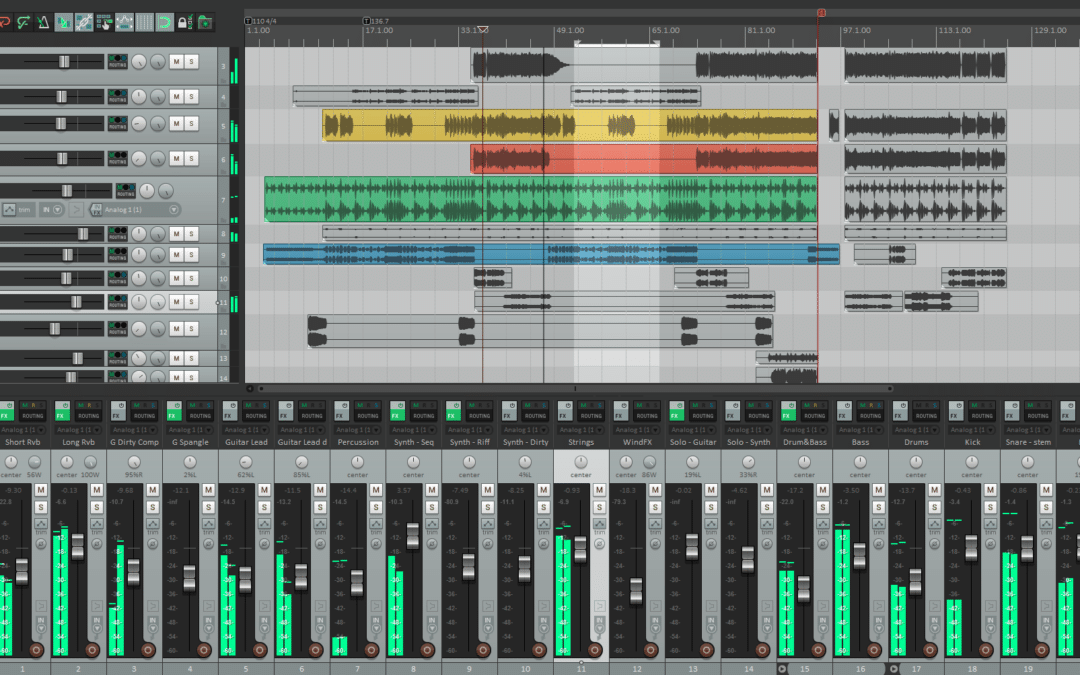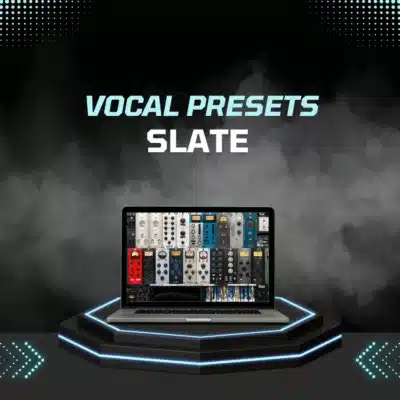What Are Stems? Understanding the Difference Between Stems and Tracks
One of the most common questions I get is about the difference between stems and tracks. This distinction can be a bit confusing, but it’s essential to understand, especially when collaborating on a project. In this article, I’ll break down what stems are, how they differ from tracks, and why it matters—so the next time someone asks, “Hey, can you send the stems?” you’ll know exactly what they mean.
What Are Stems?
Stems are grouped submixes that consolidate multiple related audio tracks into a single audio file. Instead of handling dozens (or even hundreds) of individual tracks, stems allow engineers to work with fewer, more manageable files while still maintaining a degree of control over the mix. For example, you might have stems for drums, vocals, guitars, keyboards, and effects, each containing the combined tracks for those elements.
Example of Common Stems:
- Drum Stem: A single audio file containing the mixed-down version of all drum tracks (kick, snare, hi-hats, toms, cymbals, etc.).
- Vocal Stem: A combination of lead and background vocals mixed into one file.
- Guitar Stem: Includes all electric and acoustic guitar tracks processed together.
- Synth/Keys Stem: A submix of all keyboard and synth parts.
- Effects Stem: A combination of reverb, delays, and other effects used in the song.
By using stems, engineers and producers can simplify their workflow, making it easier to balance the mix or tweak specific sections without affecting individual elements.
What Are Tracks?
Tracks refer to the individual recordings that make up a song. Each track represents a single instrument, vocal, or sound effect and is processed independently during mixing.
Example of Individual Tracks:
- A separate track for lead vocals.
- A track for each drum element (kick, snare, hi-hat, toms, cymbals, etc.).
- Individual guitar tracks for rhythm and lead parts.
- A dedicated track for each synth or keyboard part.
Tracks provide maximum control, allowing producers and mixing engineers to tweak volume levels, add effects, and fine-tune EQ settings for each sound separately.
Stems vs. Tracks: Pros and Cons
| Feature | Stems | Tracks |
|---|---|---|
| Control | Limited control over grouped elements | Full control over every sound |
| Workflow Efficiency | Faster, easier workflow | More time-consuming |
| Flexibility in Mixing | Good, but limited compared to tracks | Maximum flexibility |
| Collaboration | Easier to share and work with | Harder to manage for teams |
| Mastering Benefits | Can adjust certain elements | Not typically used for mastering |
When Should You Use Stems?
Stems are particularly useful in the following situations:
- Simplifying Mixing & Mastering: Instead of dealing with 100+ tracks, engineers can work with organized groups of sounds.
- Collaboration & Revisions: If you’re sending your mix to another engineer, stems make it easier for them to adjust the balance without needing full track-by-track control.
- Remixes & Edits: DJs and producers working on remixes can easily manipulate a song when provided with stems.
- Live Performances: Many artists use stems in live settings for backing tracks, allowing them to have professional-sounding elements while maintaining flexibility.
Mastering With Stems vs. Tracks
When it comes to mastering, stems provide more flexibility than a single stereo mix but less control than individual tracks. Mastering from stems allows an engineer to make subtle adjustments, such as enhancing vocal clarity or tightening the low end, without altering the entire mix.
However, mastering from individual tracks is not common, as mastering focuses on enhancing the final mix, not remixing individual elements. The goal is to work from the best possible mix so that the mastering engineer can focus on overall sonic enhancement rather than fixing mix issues.
How to Properly Export Stems for Mixing & Mastering
If you’re preparing stems for a mixing or mastering engineer, follow these steps:
- Label Each Stem Clearly: Use clear names like “Drums,” “Vocals,” “Guitars,” etc.
- Ensure Proper Levels: Avoid clipping and excessive compression to retain flexibility.
- Export in High-Quality Format: Use WAV or AIFF at 24-bit/44.1kHz or higher.
- Include a Reference Mix: Provide a rough mix so the engineer knows your intended sound.
- Remove Processing Unless Necessary: If stems are meant for mastering, avoid heavy processing (EQ, compression, reverb) that can’t be undone.
Final Thoughts
Choosing between stems and tracks depends on your project needs, workflow, and collaboration preferences. If you’re mixing, working with full tracks provides the most flexibility. If you’re mastering, stems offer a balance between control and efficiency without overcomplicating the process.
If you’re looking for professional stem mastering or need your song mixed and mastered to a radio-ready standard, feel free to reach out.
Frequently Asked Questions (FAQs)
1. What is the difference between stems and a stereo mix? A stereo mix is the final two-track version of a song, while stems are groups of mixed elements that allow for slight adjustments during mastering or remixing.
2. Can I use stems to remix a song? Yes! Stems are commonly used in remixes, allowing DJs and producers to manipulate separate elements without accessing full individual tracks.
3. Should I mix using stems or individual tracks? If you want complete control, mix with individual tracks. If you prefer a faster, streamlined workflow, stems can simplify the process while still offering some flexibility.
4. How do I request stems from a mixing engineer? Simply ask for grouped files for vocals, drums, instruments, and effects rather than individual tracks. Be clear about the purpose (e.g., mastering, remixing, live performance) so they prepare the stems correctly.
5. Does mastering with stems make a difference? Yes! Mastering from stems allows the engineer to make slight adjustments to balance, EQ, and dynamics that wouldn’t be possible with a single stereo mix.






